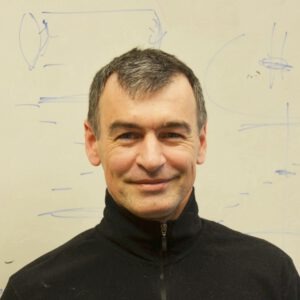
Anton Andreev is a Boeing Distinguished Professor in the Department of Physics. He studies theoretically quantum electron transport in low-dimensional systems and nanodevices. His recent research interests focus on electron physics in topological conductors, and dissipation mechanisms in superconductors. Andreev is a co-PI for MEM-C funded by the US National NSF U.S. Department of Energy, which focuses on controllable quantum materials. He is also the Director for the Thouless Institute of Quantum Matter.
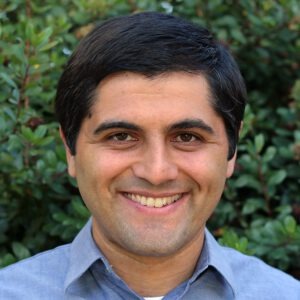
Arthur Barnard is an Assistant Professor in the Departments of Physics and Materials Science and Engineering and is a member of the QuantumX’s steering committee. Barnard uses novel scanning probe techniques to study classical and quantum systems. He focuses on understanding dynamics in molecular scale nanomechanical systems using scanning photonic cavities as well as understanding emergent electronic and optical properties of 2-dimensional quantum materials using capacitance and nearfield optical scanning techniques.
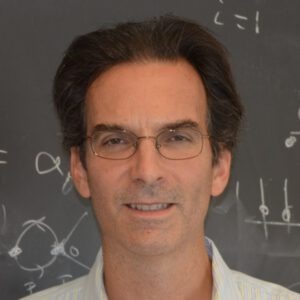
Silas Beane is a Professor in the Department of Physics. He is a member of the Nuclear Theory Group (NTG), and he is a co-PI and member of IQuS. Silas’s research has focused on nuclear theory, broadly defined, including the study of few-body systems using effective field theory techniques, and the study of hadronic and nuclear structure using a variety of analytical tools as well as lattice gauge theory simulations. He is a long-term and founding member of the high-performance computing collaboration Nuclear Physics from Lattice QCD (NPLQCD), the first lattice QCD collaboration to focus its efforts on nuclear interactions. Over the last several years Silas has focused on understanding some mysterious aspects of nucleon structure and few-body nuclear interactions with tools that have emerged from quantum information science, including various measures of entanglement and geometric quantum mechanics. Silas is currently funded by grants from the US Department of Energy via the NTG and IQuS.
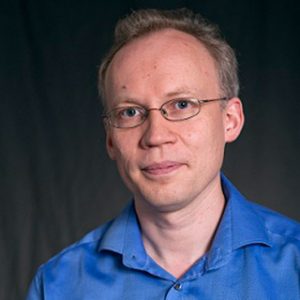
Boris Blinov is an Associate Professor at the Department of Physics. He is an atomic physics experimentalist working in the trapped ion quantum computing area, with the emphasis on developing novel techniques for trapped ion qubit control and measurement and quantum transduction. He is currently a PI on the NSF-funded study of quantum jumps and a co-PI (jointly with Kai-Mei Fu) on the DOE-funded research to develop a quantum entanglement between a trapped ion qubit and a solid-state qubit. He serves as a UW representative on the Workforce Technical Advisory Committee of the Quantum Economic Development Consortium (QED-C).
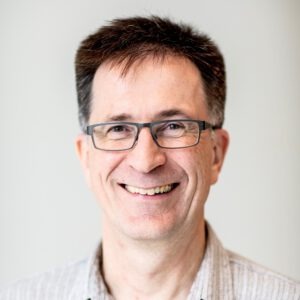
Karl F. Böhringer is a Professor in the Departments of Electrical & Computer Engineering and Bioengineering. His research focuses on micro/nano electro mechanical systems, self-assembly, microfluidics and micro-optics. He is part of an NSF Convergence Accelerator team developing a Photonic Engine to Accelerate Atomic Quantum Engineering (PEAQUE). He is director of the Institute for Nano-engineered Systems (NanoES), site director of the NSF National Nanotechnology Coordinated Infrastructure (NNCI) site at UW, and a member of the NSF AccelNet Global Quantum Leap network. He oversees the Washington Nanofabrication Facility (WNF), the largest publicly accessible cleanroom in the Pacific Northwest that supports users from academia, government and industry labs in their R&D efforts on nano systems and quantum devices.
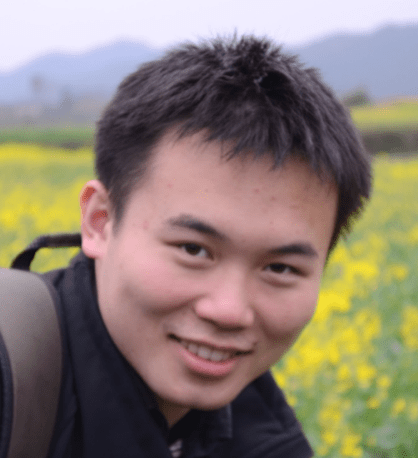
Ting Cao’s research employs quantum physics, advanced materials modelling techniques, and high-performance computing to study materials science and condensed matter physics, with special focus on the electronic structures of materials, excited-state phenomena, and light-matter interactions. His current research interest lies in exploring the distinct physical properties of one- and two-dimensional material systems which are potentially useful for future applications. Ting Cao received a Ph.D. degree in physics from the University of California, Berkeley in 2018.
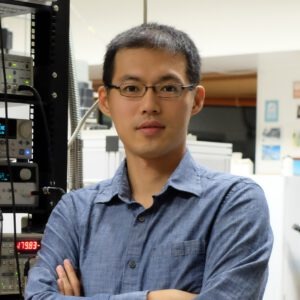
Jiun-Haw Chu is an associate professor in Department of Physics. His research focuses on the design, growth and characterization of quantum materials. His lab also develops new experimental techniques to control topological and quantum matter by elastic strain. He is currently a co-PI of the Programmable Quantum Materials Center, a joint UW/Columbia Energy Frontier Research Center funded by the U.S. Department of Energy, the co-lead of the layered quantum materials interdisciplinary research group of MEM-C, and the PI of the research grant, PECASE Strain Control Topological Quantum Materials, funded by the Air Force Office of Scientific Research, Department of Defense.
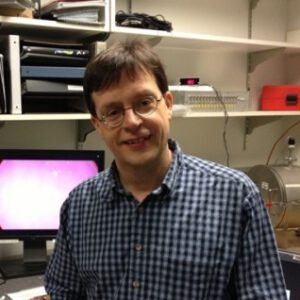
David Cobden is a Professor in the Department of Physics. His group investigates phenomena that arise in quantum materials and devices with submicron dimensions, including atomically thin two-dimensional sheets and nanowires, with a particular interest in uncovering new physics in regimes of low dimensionality, quantum coherence, nontrivial electronic topology, strong correlations, and phase transitions. They employ a combination of probes including magnetotransport, optics, scanned probes, and photoemission. Discovering and harnessing such new materials and phenomena will be essential for developing solid-state QIS platforms. Cobden is a co-PI of MEM-C and also of the Programmable Quantum Materials Center, a joint UW/Columbia Energy Frontier Research Center funded by the U.S. Department of Energy. Both centers are focused on controllable quantum materials. He also serves as chair of the steering committee for the Thouless Institute of Quantum Matter.
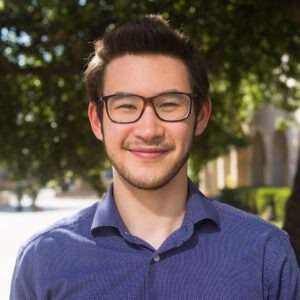
Andrea Coladangelo is an Assistant Professor in the Paul G. Allen School of Computer Science and Engineering. He is broadly interested in the theoretical foundations of quantum computation and information, with a focus on connections to cryptography. He is also a co-founder of qBraid, a cloud-based platform for learning about and developing quantum algorithms.
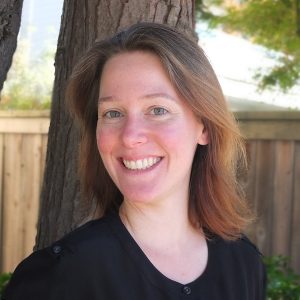
Brandi Cossairt is the Lloyd E. and Florence M. West Endowed Professor in the Department of Chemistry. The Cossairt group is focused on understanding how interfacial chemistry and defect engineering in quantum dots and van der Waals materials can be used to modulate their optical properties for applications in conventional and quantum light technologies. They are particularly interested in building emitters in a layer by layer or atom by atom fashion to eliminate ensemble heterogeneity. They are also interested in synthetic strategies that enable deterministic integration of emitters and related quantum materials into photonic cavities. Cossairt is involved in several campus projects in the field of QIS including serving as an Executive committee member and co-PI of AQET, Associate Director for Research and Research Theme I Lead for iMOD, Thrust I co-Lead for MEM-C, and is a co-PI on the QII-TAQS grant.
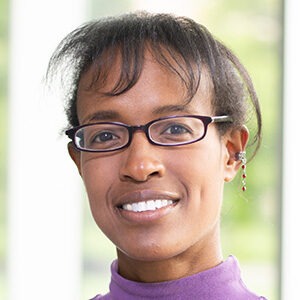
Serena Eley is an Assistant Professor in the Department of Electrical & Computer Engineering. Her research focuses on the role of disorder on electronic and magnetic properties of quantum materials and devices. More specifically, she studies the vortex-defect interactions in superconductors, skyrmion-defect interactions in magnetic materials and the effects of material microstructure on energy loss in superconducting circuits. In addition to her Henry Luce award, Eley received the John Bardeen award at the University of Illinois for her doctoral dissertation. She has also received numerous other awards and honors such as a National Science Foundation (NSF) Early Career Award, a Joseph A. Johnson III Award for Excellence, a Goddard Award for Best Research Contribution (NASA Academy Goddard Space Flight Center) and a Cottrell Scholars Award.
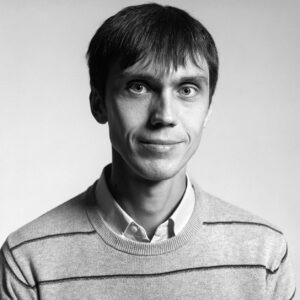
Lukasz Fidkowski is an Associate Professor in the Department of Physics. His research focuses on identifying and classifying exotic phases of quantum matter, especially those which cannot be understood in terms of the traditional field theory framework. He applies a combination of exactly solved models, topological quantum field theory, and quantum information theoretic techniques to attack these problems. Quantum information theoretic ideas, such as classifying ground states in terms of the complexity of the quantum circuits that are necessary to prepare them, are especially important in his work, and play a central role in many of the newly discovered topological and out of equilibrium phases. Over three of the past four summers he has held summer visiting researcher appointments at Microsoft Research and worked with Microsoft employees Matthew Hastings and Jeongwan.
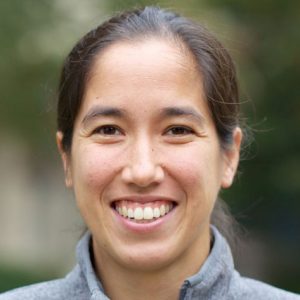
Kai-Mei Fu is the Virginia and Prentice Bloedel Professor in the Departments of Physics and Electrical & Computer Engineering. They hold a dual appointment with the Pacific Northwest National Laboratory. Fu’s research focuses on the synthesis, characterization, and control of optically active quantum defects in crystals, with applications in quantum networks and sensing. Fu is a co-PI of MEM-C and the Associate Director of Quantum Workforce Development for iMOD. Fu is also the PI and Director of AQET and the co-chair of the QuantumX Steering Committee. They serve on the National Quantum Initiative Steering Committee (appointed by the President of the United States) and are a co-author of the NSF white paper “Quantum Simulators: Architectures and Opportunities”.
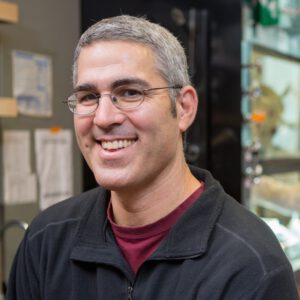
Daniel R. Gamelin holds the Nicole A. Boand Endowed Chair in Chemistry. His research involves the development of new inorganic materials with unique electronic structures that give rise to desirable photophysical, photochemical, magnetic, or magneto-optical properties. He has been a pioneer in the development of impurity- and carrier-doped colloidal quantum dots, with contributions including breakthroughs in engineered spin-exciton coupling, spin dynamics, and spin coherences in such materials. He is the PI and Director of UW’s NSF MRSEC MEM-C, which emphasizes novel quantum materials and properties, and he is also a senior investigator in the QIS-themed centers: Programmable Quantum Materials Center, a joint UW/Columbia Energy Frontier Research Center funded by the U.S. Department of Energy and the UW NSF STC IMOD. He serves on the QuantumX steering committee and the faculty advisory board of UW’s Clean Energy Institute.
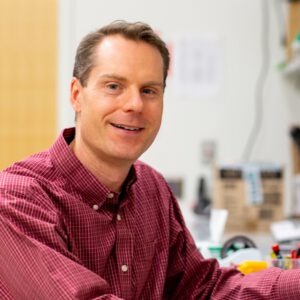
David Ginger currently holds appointments as the Rabinovitch Professor of Chemistry, Adjunct Professor of Physics, and Adjunct Professor of Materials Science and Engineering, along with a dual appointment as a Senior Scientist at Pacific Northwest National Laboratory. His research focuses on the characterization of novel semiconductor materials and their applications in optoelectronics, including quantum light sources, energy, and sensing. Ginger and his team have pioneered the development and application of novel combinations of optical and scanning probe microscopies to characterize nanostructured semiconductors. He currently serves as Chief Scientist of the UW Clean Energy Institute, founding co-director for the UW/PNNL joint Northwest Institute for Materials Physics, Chemistry and Technology (NW IMPACT), and is the founding director and PI for the National Science Foundation Science and Technology Center for the Integration of Modern Optoelectronic Materials on Demand (IMOD), which focuses on enabling materials for quantum optoelectronics.
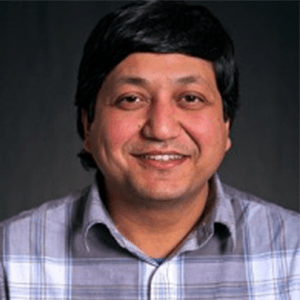
Subhadeep Gupta is a professor in the Department of Physics. Gupta is an experimental atomic, molecular and optical (AMO) physicist with general research area of ultracold atoms and quantum gases, and their uses in advancing fundamental science and applications. His work includes development of new quantum bits, many-body quantum dynamics and interferometric quantum sensing. Currently, he is a PI on individual grants from the National Science Foundation on quantum sensing using atom interferometry and from Air Force Office of Fundamental Research on quantum dynamics and creating novel quantum bits. He is also a co-author on a white paper to NASA on AMO-based quantum technologies for fundamental physics experiments in space.
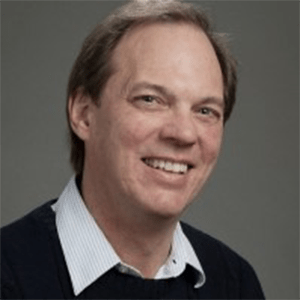
David Hertzog is the Arthur B. McDonald Distinguished Professor of Physics and Director of the Center for Nuclear Physics and Astrophysics (CENPA) at UW. He performs research in high-precision, fundamental physics, mostly notably the measurement of the anomalous magnetic moment of the muon. Hertzog was Chair of the Nuclear Science Advisory Committee for four years and was therefore central to the formation of the NSAC Subcommittee on QIS, chaired by Martin Savage, with its first meeting hosted on our campus. Hertzog’s personal research is not directly connected to QIS; however, quantum sensors are beginning to enter the work at CENPA and the field of fundamental symmetries at large.
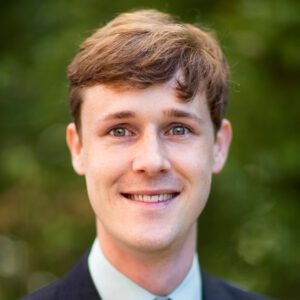
Vincent Holmberg is an Assistant Professor in Chemical Engineering, as well as a faculty member for the Molecular Engineering & Sciences Institute (MolES) and the Clean Energy Institute (CEI). His research is devoted to the development and study of new functional nanomaterials that have the potential to be produced in a scalable and cost-effective manner. His research interests include photonic nanomaterials, defect engineering, and nanomaterial assembly and integration.
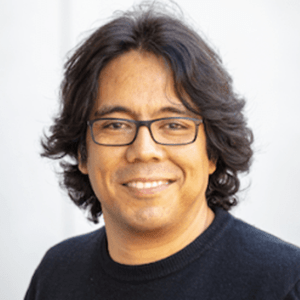
Juan Carlos Idrobo is an Associate Professor in the Department of Materials Science & Engineering and holds a joint appointment with the Pacific Northwest National Laboratory (PNNL). Specializing in the development and application of advanced electron microscopy techniques, he delves into the electronic structures of materials at an atomic level. His research is particularly focused on enriching our foundational knowledge of materials and devices used in quantum and energy transport applications.
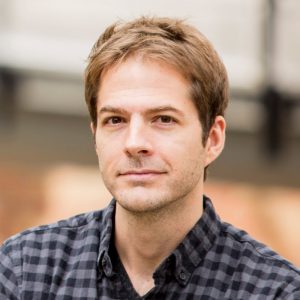
James Lee is a Professor in the Paul G. Allen School of Computer Science and Engineering. His research interests include algorithms, computational theory, geometry and analysis at the interface between the continuous and the discrete, probability and stochastic processes, metric embeddings, spectral graph theory, and convex optimization. His research has been supported by the National Science Foundation (NSF), the Simons Foundation, the Sloane Foundation, and Microsoft.
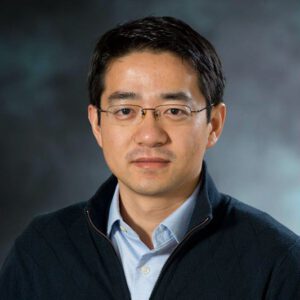
Mo Li is a Professor in the Departments of Electrical and Computer Engineering and Phyiscs. His research focuses on integrated photonics and optoelectronic materials for optical communication and computing in both quantum and classical regimes. Li is a PI (with Arka Majumdar, Karl Bohringer) for the PEAQUE grant and a co-PI (with Xiaodong XU) for the EFRI ACQUIRE grant.
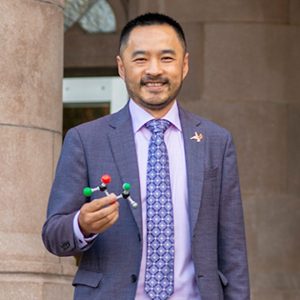
Xiaosong Li is the Harry and Catherine Jaynne Boand Endowed Professor of Chemistry and an Adjunct Professor of Material Science and Engineering. He also serves as the Associate Vice Provost for Research Cyberinfrastructure. He has a dual appointment at PNNL and serves as Director of Early Career Network, IDREAM, a DOE Energy Frontier Research Center. QIS research in the Li Group focuses on simulations of quantum entanglement and manifestation of relativistic effect in quantum systems. In collaboration with Microsoft and the Simons Institute for the Theory of Computing, Li develops reduced dimension algorithm for many-body theory using noisy intermediate-scale quantum computers. Li is the Executive Director of Education and Outreach for MEM-C, a co-PI for AQET, the PI for the RQD-NEQ grant and the PI for a grant from Microsoft Azure which provides access to IonQ and Honeywell quantum computers to advance research at UW and our QIS training efforts.
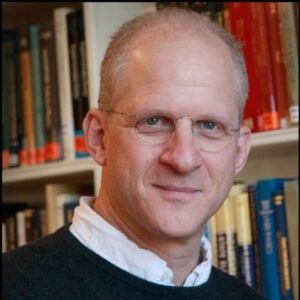
Charlie Marcus is an Affiliate Professor in the Department of Physics and the Villum Kann Rasmussen Professor at the Niels Bohr Institute in Copenhagen, Denmark, where he was founding Director of the Center for Quantum Devices. His research interests concern experimental quantum mechanically coherent electronics based on semiconductor and superconductors, novel and protected qubits, topology in condensed matter systems, and quantum chaos. Longer-term research goals include building large-scale interconnected quantum coherent with an eye toward applications in quantum information and exploring nonabelian excitations in condensed matter systems. Marcus serves on a number of QIS-related boards including the Wallenberg Center for Quantum Technology in Sweden and was a co-author of the Quantum Manifesto that led to the European Quantum Flagship. He is particularly interested in creating two-way exchanges of students and researchers between UW and the Niels Bohr Institute.
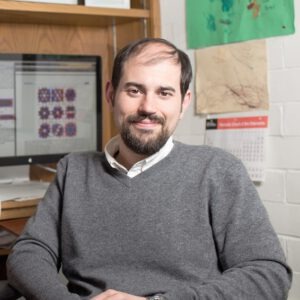
David J. Masiello is a Professor in the Department of Chemistry with adjunct appointments in Applied Mathematics and Materials Science and Engineering. Involving graduate students and postdocs from these departments as well as from Electrical Engineering and Physics, Masiello’s research is focused on the theoretical modeling of quantum, optical, magnetic, photonic, and thermal phenomena hosted by engineered materials. Specific areas of QIS investigation include: (1) Electron Probes of Quantum Materials, (2) Quantum Simulation and Quantum Optics, and (3) Topological Thermal Metamaterials. These projects are funded through NSF’s QLC, TAQS, and DMREF programs.
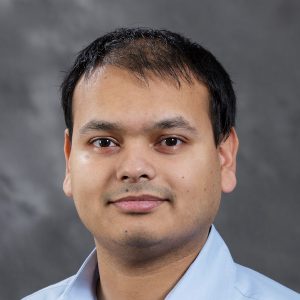
Arka Majumdar is an Associate Professor in the Departments of Electrical and Computer Engineering and Physics. His research is focused on developing reconfigurable integrated photonic technologies to scale quantum computing platform based on cold atoms and photons. Additionally, he is developing solid-state quantum simulator platform using strongly interacting photons. He is a PI of the NSF QII-TAQS grant developing topological photonics for quantum simulation. Additionally, he is a co-PI in a recently awarded NSF convergence accelerator program for quantum computing as well as a recent NSF STC on developing quantum photonic platform using solution processed materials. He serves as the Co-chair of Quantum-X, on the scientific advisory committee member for NanoES and on the executive committee member of NSF-NRT AQET.
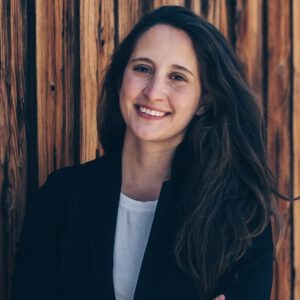
Sara Mouradian is an Assistant Professor in the Department of Electrical and Computer Engineering. Her lab builds quantum technologies at the scale useful for real-world applications. In particular, the lab focuses on the engineering challenges surrounding trapped-ion quantum technologie, tackling all aspects including optical control with integrated photonics, optimization of multi-qubit gates, and fabrication of next-generation trap designs.
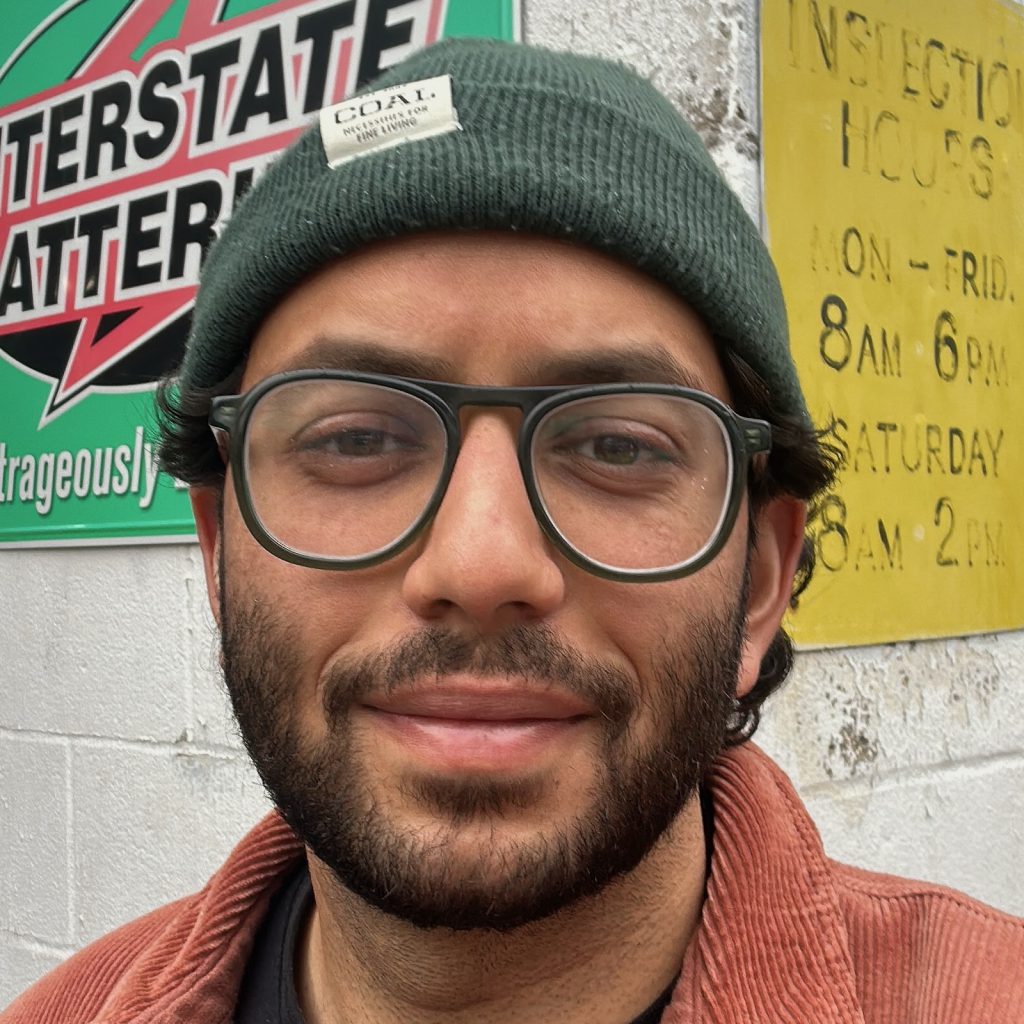
Chimay Nirkhe is a Professor in Computer Science of Engineering and a member of the CS Theory group. Before UW, he was a Research Scientist with IBM Quantum. Nirkhe’s research focuses on the intersection of complexity theory and quantum computation with the goal of proving hardness-of-approximation results and lower bounds on the description complexity of quantum states.
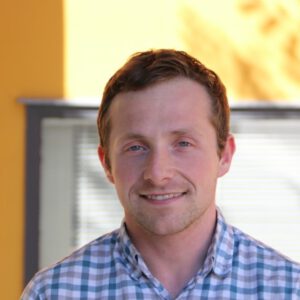
Max Parsons is the Director of the Quantum Technologies and Training Testbed (QT3) Laboratory. As director of the Quantum Technologies Training and Testbed (QT3) Lab, Max Parsons’s work focuses on creating a quantum processor testbed based on nitrogen-vacancy centers in diamond, building state-of-the-art characterization tools for quantum information science and engineering, and developing instructional labs and other tools for hands-on practical training. In addition to a number of academic publications, Max is an inventor on more than 20 patents in the fields of mixed reality and quantum computing.
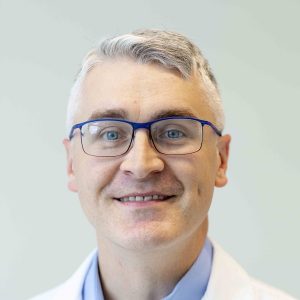
Peter Pauzauskie is an Associate Professor in the Department of Materials Science & Engineering and also holds a dual appointment at the Physical Sciences Division at the Pacific Northwest National Laboratory. His research group is focused generally on the design, synthesis, and characterization of point defects in optoelectronic nanomaterials with applications in quantum information science. Recently his group has developed high-pressure, high-temperature processing methods to create nitrogen vacancy and silicon vacancy point defects within nanodiamond materials for quantum sensing applications. Low-temperature, low-pressure methods also are under investigation for the creation of lanthanide point defects for solid state laser refrigeration of quantum point defects. He is a co-PI on an ONR-BRC group grant focused on developing laser-cooled, optically-levitated dielectric microcavities for optomechanical quantum sensing. He is also a co-PI on an NSF-MRSEC center grant focused on the synthesis of point defects within nanoscale materials. He has served in the past as a member of UW’s QuantumX committee, and currently is a senior participant in the NSF-NRT AQET.
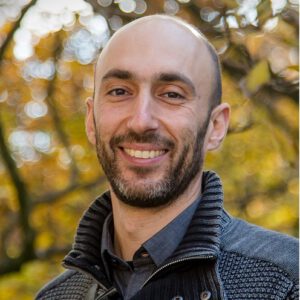
Mark Rudner is an Associate Professor in the Department of Physics and is the Kenneth K. Young Memorial Professor. Mark’s research in Condensed Matter Theory connects to a variety of topics of relevance for quantum information science, including quantum many-body dynamics and control, quantum materials and devices, and quantum coherence and dissipation. His work spans a range from abstract/formal questions about the dynamics of driven and/or open quantum systems, to direct collaborations with experimentalists, e.g., developing and using solid state spin and superconducting qubits for fundamental studies as well as quantum simulations. Currently Mark is a member of the German Research Foundation (DFG) sponsored Collaborative Research Center 183, “Entangled States of Matter,” as well a member of the SolidQ team of the Novo Nordisk Foundation’s Challenge Program, which is exploring the use of solid-state qubits and photonic systems for quantum simulation of elementary chemical processes.
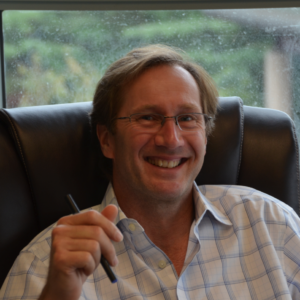
Martin Savage is a Professor in the Department of Physics and a Senior Fellow in the Institute for Nuclear Theory (on a 5-year leave). He performs research in quantum simulation of quantum field theories and quantum many-body systems, and in fundamental aspects of quantum information, exploring the broad implications and implementations of entanglement and coherence in fundamental physics. He explores entanglement to achieve a deeper understanding and to work toward optimizing quantum simulations. He performs quantum simulations of quantum field theories to further research into Standard Model Physics and beyond. Martin is the PI of IQuS, of a UW effort of the FermiLab Quantized Consortium (funded by DOE High-Energy Physics), of the UW effort in the Quantum Science Center (led by Oak Ridge National Laboratory, funded by the National Quantum Initiative), and of the Hybrid-Quantum Architectures effort led by Oak Ridge National Laboratory (funded by DOE Advanced Scientific Computational Research). Martin chaired the Nuclear Science Advisory Committee (NSAC) Subcommittee on QIS, delivering a report entitled “Nuclear Physics and Quantum Information Science” in late 2019 to address a charge from DOE and NSF. He co-organized the INT workshop entitled “Quantum Computing for Nuclear Theory”, held in November 2017, delivering the first (quantum) Whitepaper to DOE Nuclear Physics.
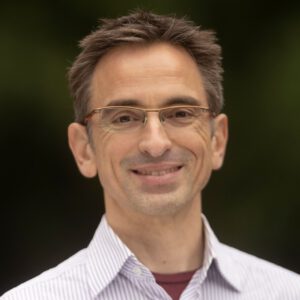
Stefan Stoll is a Professor in the Departments of Chemistry. Stoll’s research group works in the fields of experimental and theoretical physical chemistry and chemical physics with a focus on understanding the structure and dynamics of electron spin centers in molecular materials, utilizing advanced electron paramagnetic resonance (EPR) spectroscopy. In particular, his group is interested in understanding decoherence dynamics of molecular electron spin qubits in the context of applications for quantum sensing. Additionally, Stoll’s group utilizes electron spins to study the structure of proteins. His research group is also actively developing methods and software for the analysis and modeling of data from quantum spin resonance experiments.
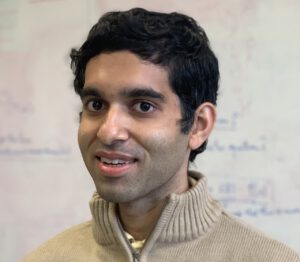
Rahul Trivedi is an Assistant Professor in the Department of Electrical and Computer Engineering. His current research focuses on developing tools for simulating many-body open quantum systems. His research uses tools from quantum information theory and quantum complexity theory to understand the limitations of these systems, and develop hardware proposals for next-generation quantum information technologies.
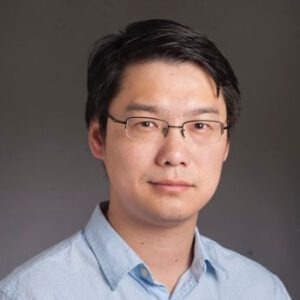
Di Xiao is a Professor in the Departments of Materials Science and Engineering and Physics. He also holds a joint appointment at Pacific Northwest National Laboratory (PNNL). Xiao’s research is focused on the theoretical modeling of novel quantum materials for QIS related applications. His current research interest lies in in topological phenomena that are often characterized by novel electromagnetic responses, which may be useful for applications in energy-efficient quantum electronics and quantum computing. His research is supported by AFOSR MURI (co-PI) on layered magnets, DoE EFRC (co-PI) on programable quantum materials, and DoE (co-PI) on ultrafast dynamics in 2D materials.
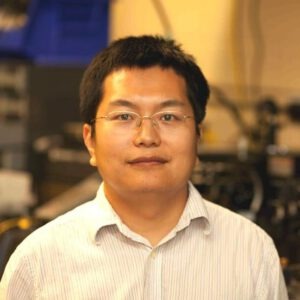
Xiaodong Xu is a Boeing Distinguished Professor in the Departments of Physics and Materials Science and Engineering. He also holds a courtesy appointment at Pacific Northwest National Laboratory (PNNL). Xu’s research involves creation, investigation, and understanding of novel quantum materials and devices. Projects of particular interest towards QIS include quantum light source in 2D semiconductors for quantum communications, topological devices for topological quantum computation, collective spin-waves for qubit transduction, and synthetic Moiré quantum matters for quantum simulation. These projects are supported by numerous federal grants, including DoE single PI grant on understanding light-matter interactions in 2D heterostructures, AFOSR MURI (PI) on understanding the fundamental spin physics in layered magnets, ARO MURI (co-PI) on creation of novel defects for engineering quantum light sources, NSF supported team project (co-PI) on engineering quantum repeater network based on 2D quantum emitters, DoE EFRC (co-PI) on developing programable quantum material platforms for new quantum devices, and AFOSR project (PI) on quantum engineering magnetic topological insulators for topological quantum computation.
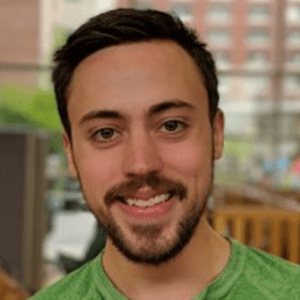
Matthew Yankowitz is an Assistant Professor jointly appointed in the Departments of Physics and Materials Science & Engineering at UW. Yankowitz’s group focuses on understanding and controlling the properties of atomically-thin van der Waals quantum materials and heterostructures using a combination of low-temperature electrical transport and scanning tunneling microscopy. A major goal of this work is to use these materials as platforms to unravel the mysteries of strongly correlated electrons, magnetism, superconductivity, topology, and more. Materials created and studied by the Yankowitz group can act as designer quantum simulators used to study strongly interacting electrons in a tunable synthetic lattice, and potentially as the basis for future quantum bits. Yankowitz is a member of MEM-C and the Programmable Quantum Materials Center, a joint UW/Columbia Energy Frontier Research Center funded by the U.S. Department of Energy, both of which fund research focused on discovering, understanding, and controlling the properties of quantum materials with potential connections to quantum information.
